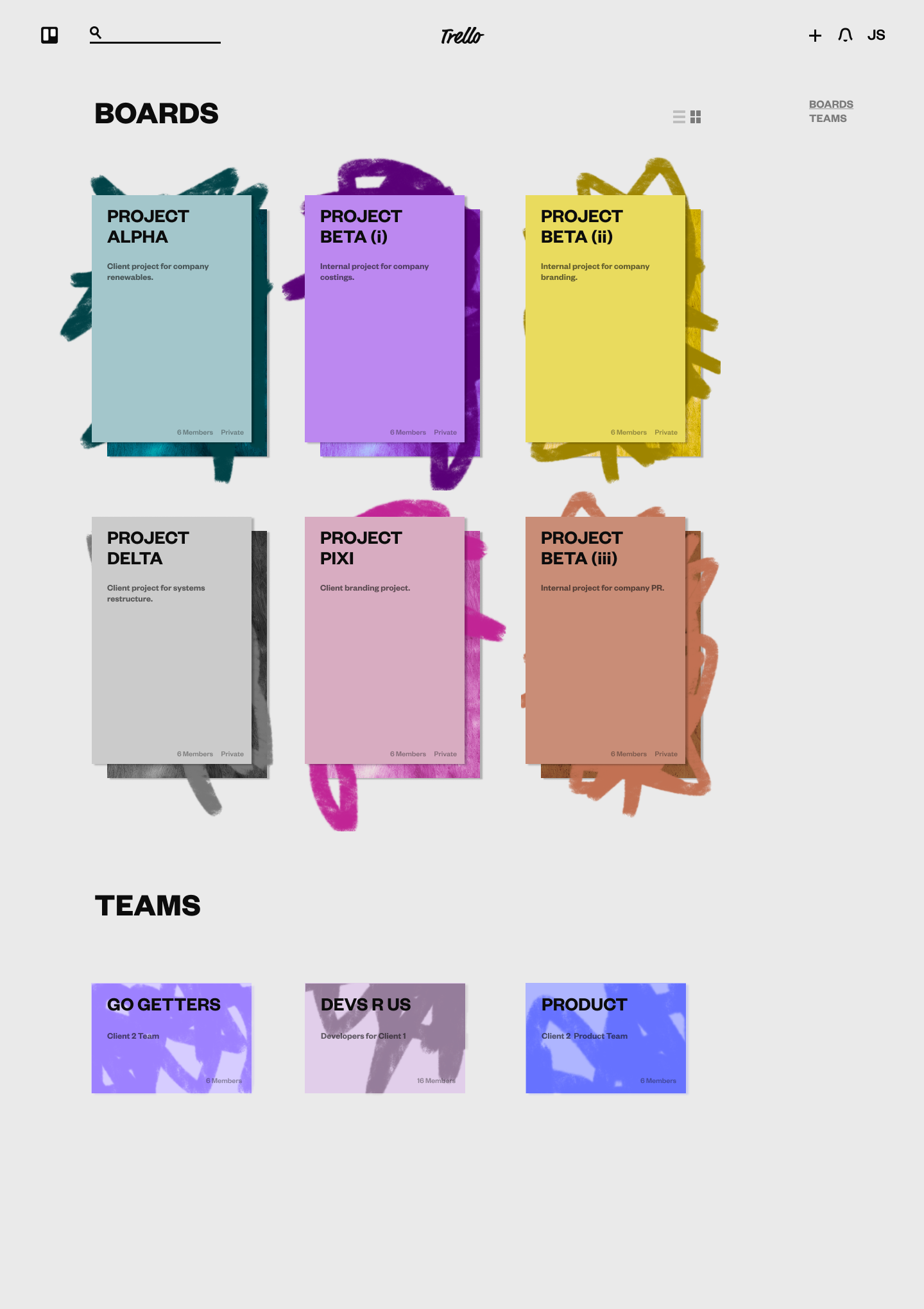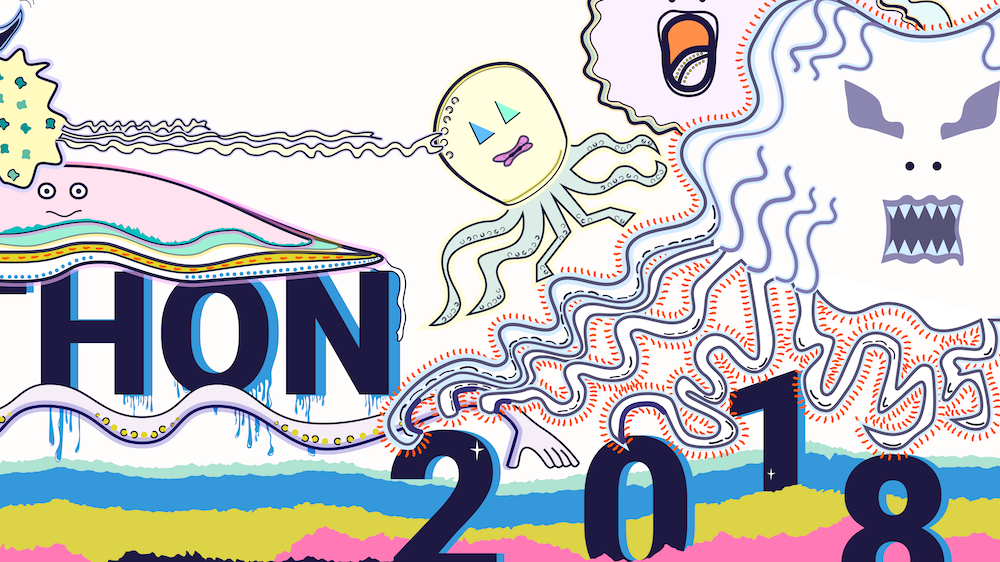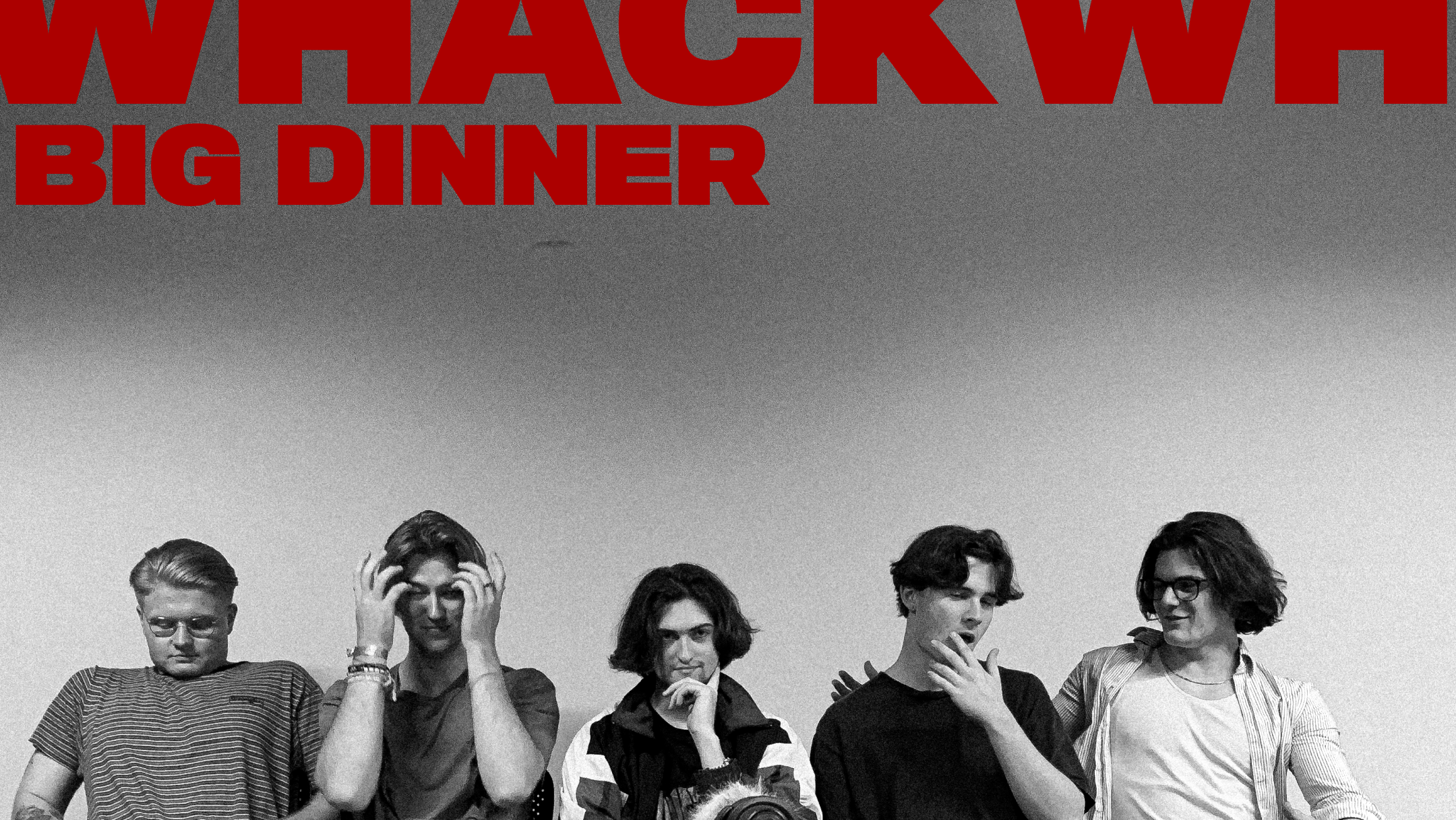This redesign project aims to simplify the current Atlassian Trello product and reflect the playful and iterative side of collaboration. This was achieved by removing confusing aspects of navigation and adding playful texture and vibrant colours to the design.


A 'bare bones' approach was taken towards the UX for this project to eliminate any potential over complications and reinitiate discussions regarding the purpose of some features. On the boards page below, only the core links are shown and the option for different views were added.
Without having full context to each Trello design decision, some UX choices were made based off personal use and general design reasoning. Some navigational features were removed from the current design to simplify feature locations for the user. These involve link navigation and additional buttons which clutter the window.
The top navigation bar was simplified to include (from left to right) a link to boards, a search bar, a link to the Trello home page, a link to add a new board, notifications and profile.
As most sites use logos for home page links, it was determined more intuitive and familiar to link to the Trello home page from the logo than to boards. Additionally, the logo and boards icon were separated to ensure the user understands that both links lead to different pages. The quick access to boards was removed, however, displaying only recent boards may be used to simplify the current quick access link.


The UI for this project aims to communicate a greater sense of creativity, playfulness and collaboration. Platforms such as Trello have many 'power user' features which can overwhelm users initially. Integrating sketch-like textures and vibrant colours intends to invite users to make mistakes and encourages an iterative process to their collaboration.
This design combines Trello Inspiration and Trello Playbooks under the Trello Inspiration page in order to simplify resource location for users. Some inspiration pieces could then be published by Trello and they would link to a layout similar to the individual playbook articles. Additionally, users would be able to allow their boards to be copied in their own articles.














